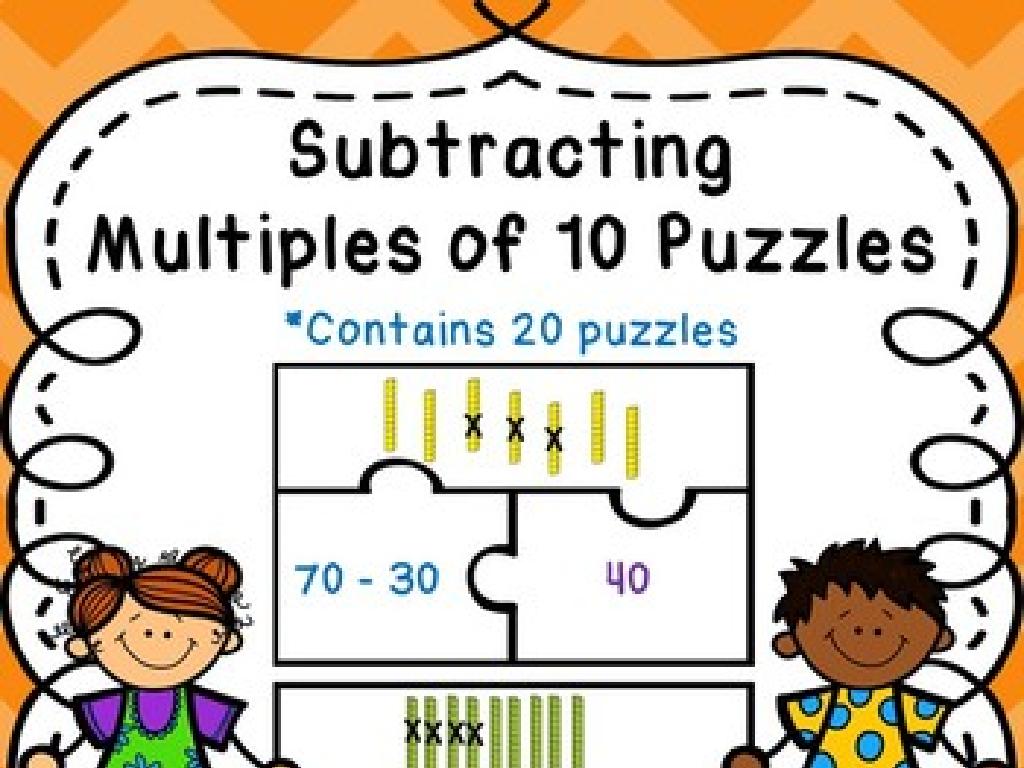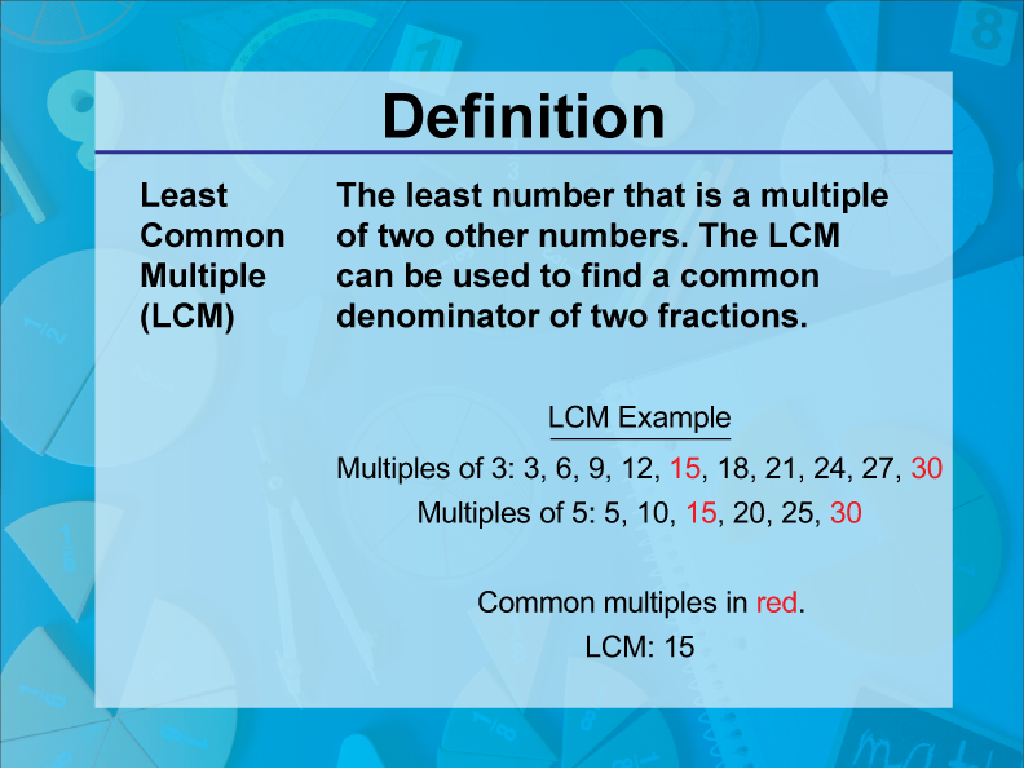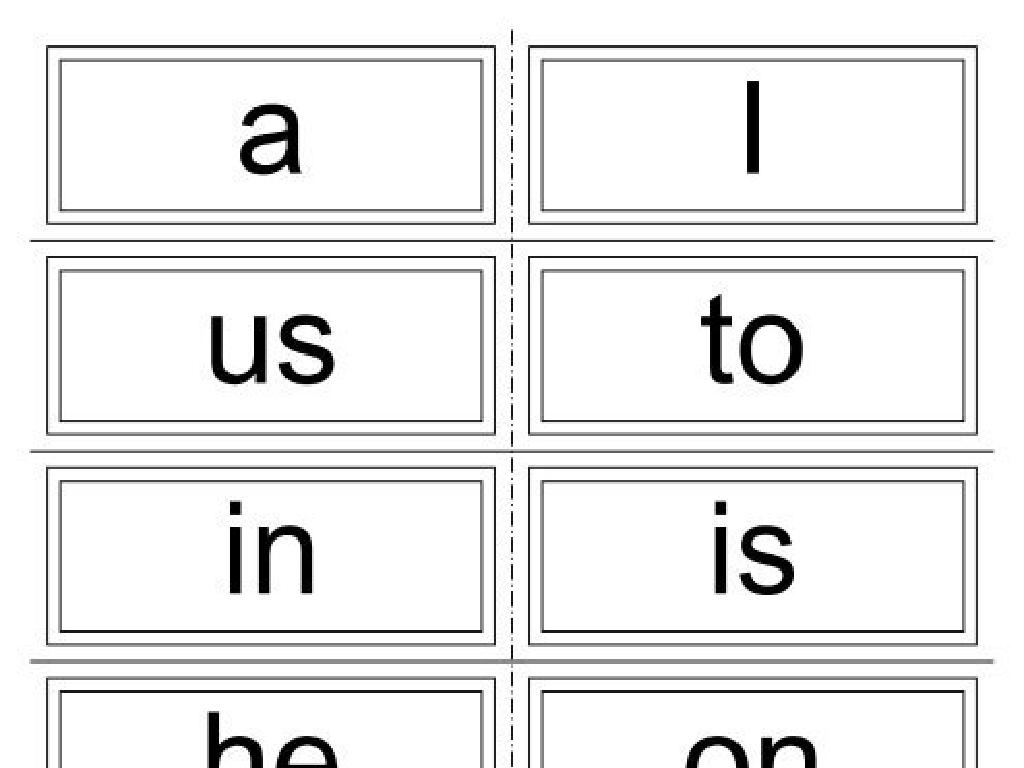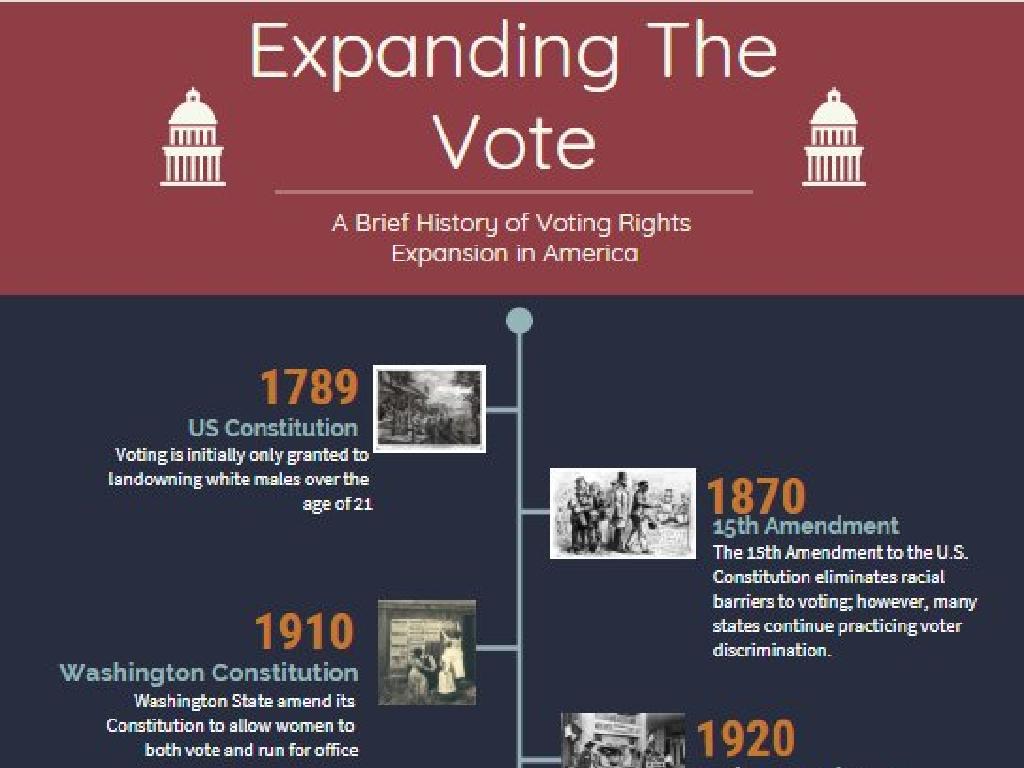Count Forward By Tens - Up To 1,000
Subject: Math
Grade: Second grade
Topic: Skip-Counting And Number Patterns
Please LOG IN to download the presentation. Access is available to registered users only.
View More Content
Welcome to Skip-Counting by Tens!
– Learn to count by tens
– Counting by tens like 10, 20, 30, up to 1,000
– Count quickly and easily
– It’s like hopping from one number to the next, skipping some in between
– Practice skip-counting
– We’ll use games and charts to practice
– Become a skip-counting superstar
– With practice, you’ll be able to count by tens super fast!
|
This slide introduces second graders to the concept of skip-counting by tens, a foundational skill in understanding number patterns and place value. Start by explaining that skip-counting is a way to count faster by ‘jumping’ over numbers. Use visual aids like number lines or charts to show the pattern when we count by tens. Engage the class with interactive activities such as chanting the tens, using fingers to represent tens, or playing games that involve counting objects in groups of ten. Encourage students to notice the pattern in the last digit (0, 0, 0) and the growth in the tens place. By the end of the lesson, students should feel confident in their ability to count by tens and recognize the efficiency it provides in counting large quantities.
Exploring Skip-Counting by Tens
– What is skip-counting?
– Skipping numbers in a sequence, like hopscotch
– Counting by tens
– Instead of 1, 2, 3, we count 10, 20, 30, …
– Visualize number leaps
– Imagine hopping on stones across a stream, each stone is a ten!
– Practice with examples
– Let’s try: 10, 20, 30, can you continue?
|
This slide introduces the concept of skip-counting, a fundamental skill in understanding number patterns and preparing for multiplication. Explain that skip-counting is like jumping over numbers in a sequence, which makes counting faster. Use the analogy of hopscotch or stone hopping to help students visualize the process. Emphasize that when we skip-count by tens, we’re adding ten to the previous number. Encourage students to practice by starting at 10 and continuing to add tens until they reach 1000. This activity can be done with the whole class, in small groups, or individually. Provide examples on the board and have students practice in their notebooks or on a number line.
Counting by Tens Up to 1,000
– Start counting at 10
– Hop from ten to ten
– Pattern: 10, 20, 30, …
– Each time we’re adding 10 more
– Ones place doesn’t change
– The digit in the ones place is always 0
|
This slide introduces students to the concept of skip-counting by tens. Begin by explaining that skip-counting is like hopping from one number to the next in a sequence, skipping some numbers in between. Show them how to start at 10 and then add 10 to get to the next number in the pattern. Emphasize that the ones place remains the same (zero) as they count by tens. This concept helps students recognize patterns in numbers and lays the groundwork for understanding place value and basic addition. Encourage students to practice counting by tens aloud and to use their fingers to represent each hop of ten. You can also use visual aids like a number line or counters grouped in tens to reinforce the concept.
The Benefits of Counting by Tens
– Quick way to count items
– Aids in addition & subtraction
– Practical for daily tasks
– Example: Counting money
– Count dimes or bundle items in groups of 10
|
Counting by tens is a foundational skill in mathematics that allows students to count more efficiently. It’s particularly useful when dealing with large quantities, as it speeds up the counting process. This skill also lays the groundwork for understanding place value and number patterns, which are crucial for performing more complex arithmetic operations like addition and subtraction. In everyday life, counting by tens can be applied to situations like counting money, especially coins like dimes, or grouping objects for quick estimation. During the presentation, demonstrate counting by tens using real-life examples, such as grouping classroom supplies or using play money. Encourage students to practice by counting various items in tens and to notice patterns that emerge when we skip count by tens.
Let’s Practice Together: Counting by Tens!
– Count objects in groups of ten
– Observe patterns while counting
– Like 10, 20, 30, notice the last digit is always zero
– Practice with examples
– Example: 10 pencils, 20 marbles, 30 blocks
– Aim for counting perfection
|
This slide is an interactive activity designed to help second graders practice skip-counting by tens. Start by grouping classroom objects in tens and count them together with the students. Highlight the pattern that the last digit is always zero when counting by tens. Provide several examples, such as pencils, marbles, and blocks, to count in groups of ten. Encourage the students to participate and count aloud. Reinforce the concept that practice is essential for mastering this skill. As an extension, you can ask students to count by tens starting from numbers other than ten, like 5 (15, 25, 35…), to challenge them further.
Counting by Tens to 1,000
– Patterns go beyond 100
– Skip-count by tens to 1,000
– Example: 100, 110, 120…
– Starting at 100, add 10 each time
– Can you keep going?
– Try counting on your own from 130!
|
This slide introduces the concept of skip-counting by tens to reach 1,000, showing that the pattern they learned to count by tens within 100 continues much further. Emphasize that the same rule applies: adding ten to the previous number. Start with an example sequence beginning at 100 and ask the students to continue the pattern. Encourage them to practice this by starting at different numbers, not just 100. This will help solidify their understanding of the pattern and its application. In the next class, students can be asked to demonstrate their ability to count by tens from any number to 1,000.
Fun with Skip-Counting by Tens
– Games make counting fun
– Songs and dances for learning
– Use rhythm and movement to remember numbers
– Count by tens with a song
– Sing along to learn counting in tens up to 1,000
– Practice skip-counting together
– We’ll count together in class using a catchy tune
|
This slide is designed to introduce students to the concept of skip-counting by tens in an engaging and interactive way. By incorporating games, songs, and dances, students can learn mathematical patterns through play and music, which helps in memorizing the sequence of numbers. The skip-counting song will be a fun activity where students can sing along and practice counting by tens together. It’s a great way to make learning math concepts like skip-counting enjoyable and memorable. Encourage students to move to the rhythm as they count, reinforcing the pattern through physical activity. Prepare a simple and catchy song that repeats the sequence of numbers when counting by tens, and plan to lead the class in singing and counting during the next session.
Class Activity: Counting by Tens Relay
– Form teams for relay
– Pass a baton, count by tens
– Each student says the next number
– Aim to reach 1,000 together
|
This interactive class activity is designed to help students practice skip-counting by tens in a fun and engaging way. Divide the class into small teams and give each team a baton. Students will pass the baton to the next team member after stating the next number in the sequence, counting up by tens. The challenge is to reach 1,000 as a team without skipping any numbers. If a number is missed, the team must start again from the last correct multiple of ten. This activity encourages teamwork, attention to numerical order, and reinforces the concept of skip-counting by tens. Possible variations include counting by tens starting from numbers other than zero (e.g., 5, 15, 25, …) or using a timer to add a time challenge aspect to the activity.
Counting by Tens: Conclusion and Review
– Excellent work on counting by tens!
– Recall the tens pattern for speed
– Like 10, 20, 30… it’s a fast way to count!
– Make a skip-counting chart at home
– Use paper to draw a chart, count by tens to 1,000
– Keep practicing and have fun!
– Try counting things in groups of ten!
|
As we wrap up today’s lesson on skip-counting by tens, it’s important to reinforce the pattern recognition skills the students have learned. Encourage them to remember the sequence and use it as a tool to count more efficiently. Suggest creating a skip-counting chart at home as a fun activity to reinforce the concept. Remind them that practice is key to becoming comfortable with counting by tens. During the next lesson, we can review their charts and discuss any challenges they faced. Celebrate their progress and encourage them to find creative ways to incorporate skip-counting into their daily lives.






